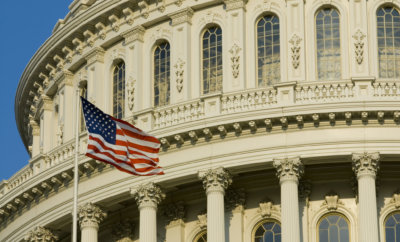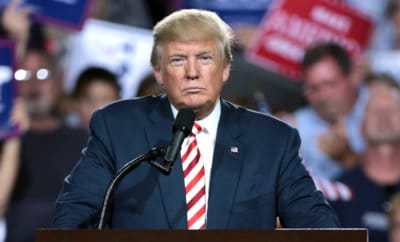Immigration
Indians Received Over 74 Per Cent of H-1B Visas Issued in U.S. in Last Two Years

United States embassy in New Delhi
Photo: Twitter
China received 9.3 per cent and 9.4 per cent of the total number of H-1B visas issued by the United States in 2016 and 2017, respectively.
Technology professionals from India took up 74.2 per cent of the total number of H-1B visas issued by the United States in 2016, which increased to 75.6 per cent in 2017, the United States Citizenship and Immigration Services (USCIS) said in its latest report.
China came second in terms of the number of H-1B visas received, with 9.3 and 9.4 per cent, respectively, for 2016 and 2017, according to the report, released on May 7. There was a drop of 4.1 per cent in the number of new H-1B beneficiaries from India approved for initial employment in the fiscal year of 2017. However, the number of beneficiaries approved for continuing employment increased by 12.5 per cent in the same year.
The report, titled “Characteristics of H-1B Specialty Occupation Workers,” was sent to U.S. lawmakers on April 10. It showed that 70,737 Indians received initial H-1B visas in 2016, and the number dropped to 67,815 last year. A total of 185,489 visas for continuing employment were issued to Indians in 2016, which increased to 208,608 in 2017. In total, 256,226 Indians received H-1B visas in fiscal year 2016 while the corresponding figure was 276,423 in 2017.
According to USCIS, the total number of H-1B petitions increased by 1.24 per cent in the period, from 398,718 in 2016 to 403,675 in 2017. The number of H-1B petitions approved jumped about 5.9 per cent, from 345,262 in 2016 to 365,682 in 2017. The median salary of beneficiaries of approved petitions increased from $82,000 in 2016 to $85,000 in 2017.
The number of H-1B petitions approved for workers aged between 25 and 34 years constituted 66.2 per cent of the total approvals in 2017 while the number of H-1B petitions for workers with a bachelor degree was 45.2 per cent that year. About 44.5 per cent of approved petitions were for workers with a master’s degree, while 6.8 per cent went to those with a doctorate, 3.3 per cent went to workers with a professional degree, and 69.8 per cent were received by those in computer-related occupations in 2017 fiscal, the report said.
The number of H-1B petitions approved for workers in computer-related occupations increased by 6.6 per cent, from 237,837 in 2016 to 254,592 in 2017. As per the USCIS, the number of H-1B petitions for all other occupation groups increased by 3.4 per cent, from 106,418 in fiscal year 2016 to 110,009 in 2017.
The H-1B petition for initial employment is filed by the employer, and only some of them are applicable under the annual cap. The ones exempt from annual cap include petitions submitted by non-profit research organizations or government research organizations.
The employment petitions are usually extensions, sequential employment or concurrent employment, which are filed for foreigners already staying and working in the United States. The extensions are filed for H-1B workers who want to work beyond the initial three-year period up to a total of six years. Six years is the maximum period permissible under law.




You must be logged in to post a comment Login